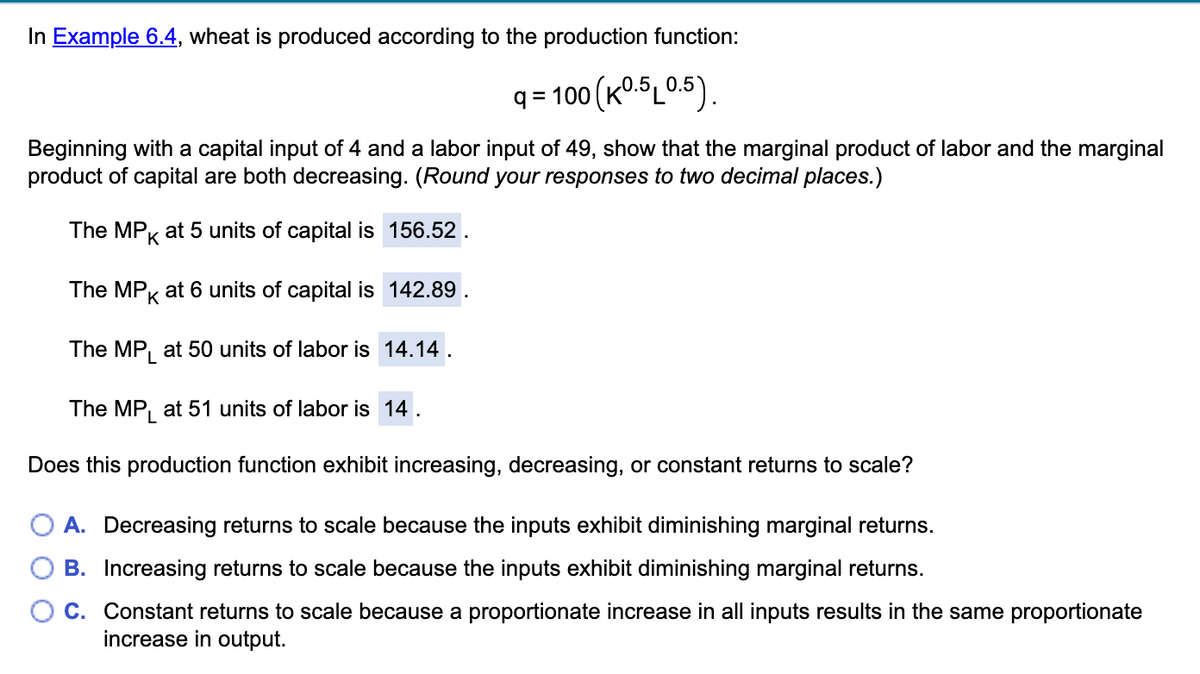In Example 6.4, wheat is produced according to the production function: q = 100 (K0.5L0.5). Beginning with a capital input of 4 and a labor input of 49, show that the marginal product of labor and the marginal product of capital are both decreasing. (Round your responses to two decimal places.) The MPK at 5 units of capital is 156.52. The MPK at 6 units of capital is 142.89 . The MP, at 50 units of labor is 14.14. The MP, at 51 units of labor is 14. Does this production function exhibit increasing, decreasing, or constant returns to scale?

The technological relationship between quantities of physical inputs and quantities of products output is described by a production function. The production function is a major concept in standard neoclassical theories, and it is used to define marginal product and distinguish allocative efficiency, both of which are important in economics. One of the most significant purposes of the production function is to deal with allocative efficiency in the utilization of factor inputs in production and the income distribution that results as a result. as an engineer or professional management could interpret it, to those aspects while abstracting from the technical issues of obtaining technical efficiency Researchers frequently employ Shephard's distance functions or, alternatively, directional distance functions to describe the case of many outputs and many inputs.
Trending now
This is a popular solution!
Step by step
Solved in 3 steps









